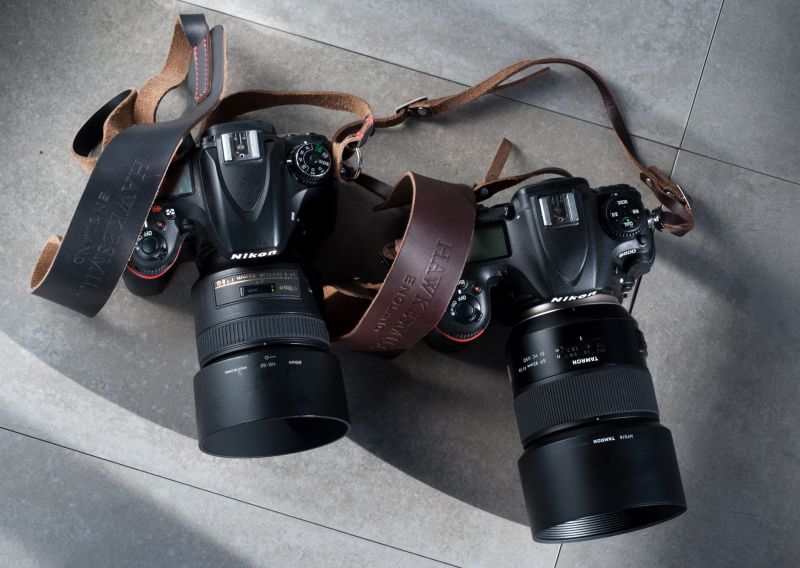Photography has always been an important tool in times of political and social unrest. For the three decades of American history (1960-1990) that spawned the Civil Rights Movement, Women's Liberation, Vietnam War (and its subsequent protests), the financial crash of the early 70s and the shattering of the illusion of the 'American Dream', photography acted as an alternative to mainstream media propaganda and ring wing conservatives. Enabling everyday people, women, children, and minority groups, to have their stories heard.
"When photographers are interested in the fringes of society, they unveil a truth that otherwise we would never get to see; how these people live, how they function. This counterposition to media narratives drives human empathy and shows how different social issues are experienced, interpreted and expressed," explains Irene Aristizábal, one of the curators, alongside Abi Spanks and Polly Furry, of Nottingham Contemporary's new show, States of America. Offering an insight into how America's turbulent social and political climate of the time helped to realise the possibilities of photography, States of America plays out across four spaces, and presents 200 works from over 17 photographers – from Mary Ellen Mark to Bruce Davidson, William Eggleston, Diane Arbus, Ming Smith, Bill Hudson and Milton Rogovin, to name a few. The team spent over a year digging through the Wilson Centre for Photography's collection, as well as including photographers often excluded from th e post-war narrative; namely women and people of colour.
 "Lower West Side, Buffalo (Mother and child)", 1969-72Phot ography Milton Rogovin
"Lower West Side, Buffalo (Mother and child)", 1969-72Phot ography Milton Rogovin Opening in the late 1950s, the exhibition traces how American photography evolved as an advocacy tool, exampled by artists like Dorothea Lange, Walker Evans and Russel Lee, who documented the devastating living conditions of 1940s post-Great Depression America. The medium took a radical turn in the 1960s when new-gen photographers escaped the authorial confinements of the press to work independently through self-published photobooks and gallery exhibitions. In 1963, Lee Friedlander coined the term 'social landscape' to define this new movement and photography turned its lens to the extraordinary in common objects: street scenes and everyday people.
States of America follows this shift in human empathy and the different ways that photographers use their lens to trigger emotion. The first room explores the gaze of Diane Arbus. Her controversial work is often shrouded in the ethics of photographer-subject relations – Germaine Greer once stated she had felt 'used' as a subject of Arbus. "'Subject' or 'Object' was a topic that kept re-appearing when we were looking at the work. It was so important to see how the position of the photographer transpired in the way the subjects were represented" explains Aristizábal.
 "Kid Looking Over At Camera", 1972Courtesy of Wilson Centre for Photography. © Mark Cohen
"Kid Looking Over At Camera", 1972Courtesy of Wilson Centre for Photography. © Mark Cohen The exhibition continues into Mark Cohen's intrusive black and white, wide-angle snapshots. Old men shy away from the camera and bodies appear cropped. Rogovin's work is in sharp juxtaposition – instead of 'stolen moment' his portraits capture residents of the Lower West Side, where he spent over three decades (from 1972-2002) capturing the community's six square block area.
Mary Ellen Mark's famous work in Seattle in the early 80s is also on display, where she focused her lens on the city's homeless young people who made ends meet as pimps, sex workers and drug dealers. Notably Tiny, a 13-year-old sex worker and her friends. Published initially in 1988 as the book, Tiny: Streetwise, Mark returned three decades later to produce Tiny: Streetwise Revisited, in 2015 – the same year the photographer passed.
 A Man in a Bowler Hat 76/79Copyright Dawoud Bey. Courtesy of Stephen Daiter Gallery
A Man in a Bowler Hat 76/79Copyright Dawoud Bey. Courtesy of Stephen Daiter Gallery The third room, Private Interiors, spotlights Jim Goldberg and Dawoud Bey. Setting Goldberg's shots apart from his peers is the voice he gives his sitters. His Rich and Poor series features a wide range of subjects across America's socio-economic spectrum in 1979. Goldberg doesn't pacify his subjects through his gaze, but includes handwritten notes from the sitters under their shots. Photos and prose from poverty are contrasted with portraits and pleasures from American elite, pulling viewers directly into the extremities of the American Dream.
Dawoud Bey's 1975 series, Harlem USA series, traces the lives of Harlem typologies as he tried to correct the imbalance between the New York neighbourhood's unique character and its representative identity in wider 70s America. His photographs feature barbers, shoemakers and church ladies inspired by his family roots in the city.
Above all, States of America crystallises the power of the camera as a tool for change, education and a platform for alternative voices. As Martin Luther King said in 1961 while discussing photography during America's Civil Rights movement: "The brutality with which officials would have quelled the Black individual became impotent when it could not be pursued with stealth and remain unobserved. It was caught – as a fugitive from a penitentiary is often caught – in gigantic circling spotlights. It was imprisoned in a luminous glare revealing the naked truth to the whole world."
States of America is on at the Notthingham Contemporary until November 26 2017. More information here
 "Karate Stance, Wilkes-Barre, PA", 1977Courtesy of Wilson Centre for Photography. © Mark Cohen
"Karate Stance, Wilkes-Barre, PA", 1977Courtesy of Wilson Centre for Photography. © Mark Cohen Source: The photographers that shone a light on America's outsiders


 The LowePro Dry Zone 200. Photo: Martin Hartley
The LowePro Dry Zone 200. Photo: Martin Hartley 











 PreviousNext
PreviousNext 









 2017 Toyota 86 vs
2017 Toyota 86 vs 



